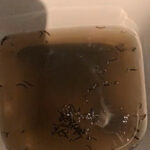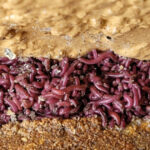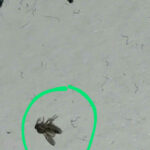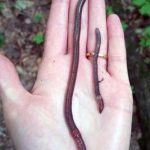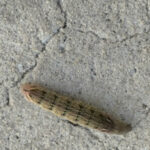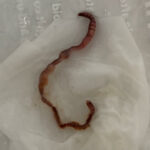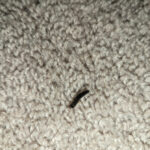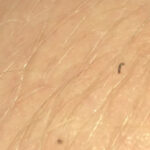Bookworm is a term that is often used to describe a person that spends too much time reading or studying. The term is rarely used to describe a worm that eats books. This is actually the real definition of bookworm. Also spelled “book worm,” bookworm is the term given to the beetle larvae that feed on the paste and glue that make up the binding on books. Because bookworms are attracted to the paste and glue that is used to bind books, modern books use alum (the ammonium double sulfate of aluminum) in the paste to discourage the larvae. Bookworms eat the paper of books as well.
Bookworms are roughly 0.1 to 0.2 inches in length and there are several different types including the larvae of cigarette beetle, the drugstore beetle, the Mexican book beetle, and the white-marked spider beetle. The larvae of cigarette beetle are cinnamon-colored and it has a taste for rare manuscripts. It also eats drugs, leather, spices, dried vegetable matter, herbarium collections, cornhusk dolls, chocolate, breakfast foods, and other types of books. The larvae of the drugstore beetle feasts on the spine and glue of books, and it also tunnels through the pages of the book and emerges through the cover and the spine.
The dark brown, chunky larvae of the Mexican book beetle are covered with fine, silky hairs. It can be found curled up in a c-shape in its tunnels. These bookworms feed on every part older volumes, even the leather. The larvae of the white-marked spider beetle and the brown spider beetle chew through bindings, and the paper of books.
It is very difficult to eliminate bookworms without damaging precious rare manuscripts, prize novels, and other books. However, if you are very careful and patient, you might be able to treat single books at a time. Treatments have to be repeated every few weeks to kill the eggs. You can treat a single book by putting the book in an airtight box surrounded with cotton wool soaked in ether. Again, treatments must be repeated every few weeks to kill the eggs. If you come across other books that may contain bookworms, the books should be isolated immediately and treated.
To prevent bookworm infestations, you can use substances such as camphor or naphthalene in the bookcase or place pieces of linen soaked with essence of turpentine, camphor, or an infusion of tobacco behind the books, especially in the place where there is a high concentration of insects. When the smell dies, repeat the process. You may also scatter some fine pepper on the shelf. The smell of the pepper penetrating into the shelf may have the same effect as the soaked linen pieces.
The bookworm isn’t the only type of insect that feasts on paper. Other insects that feed on starchy material or wood will also eat the paper of books. Cockroaches, the tiny larvae of moths, booklice, silverfish, and termites also eat the paper, glue and the paste of books. The beetle larvae known as bookworms belong to the family Bostrichidae, of the order Coleoptera. The moth larvae known as bookworms belong to the family Oecophoridae, of the order Lepidoptera. Booklice make up the family Liposcelidae, of the order Psocoptera.
All About Worms is always free, always reader-supported. Your tips via CashApp, Venmo, or Paypal are appreciated! Receipts will come from ISIPP Publishing.



